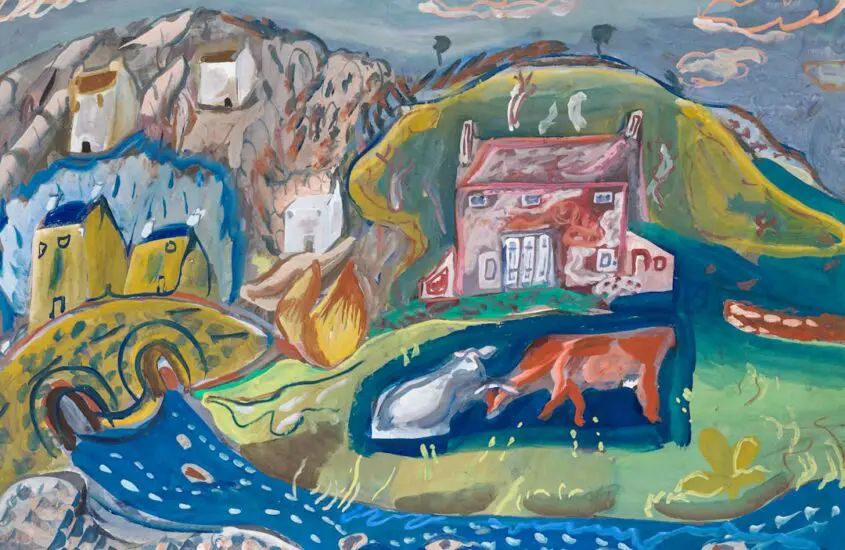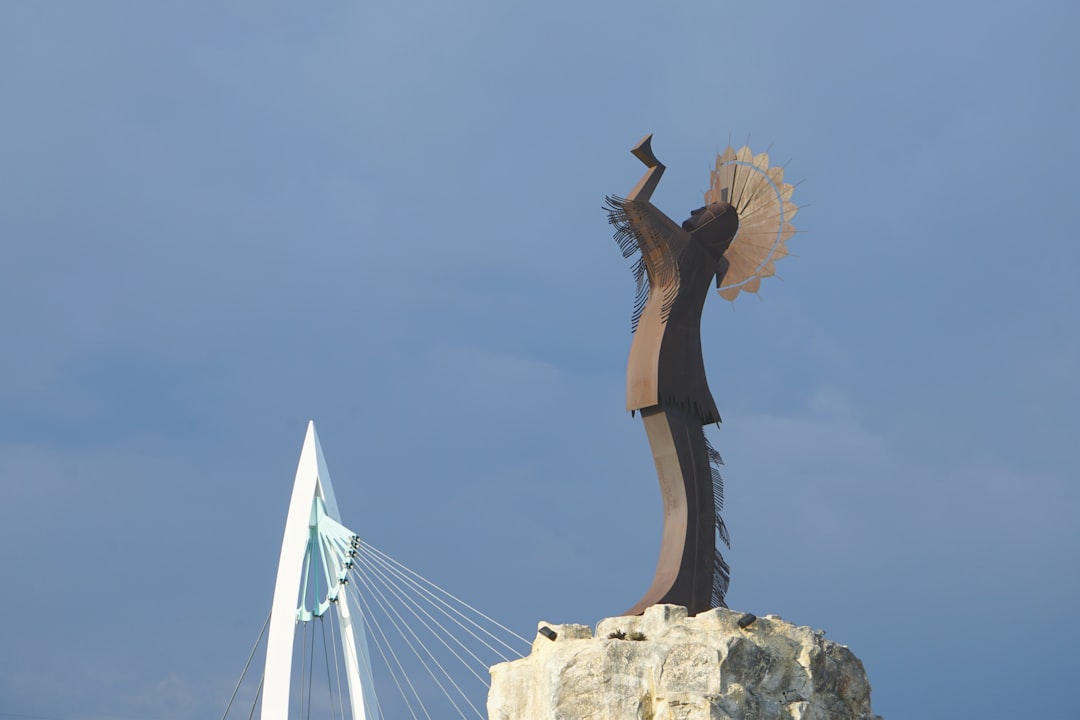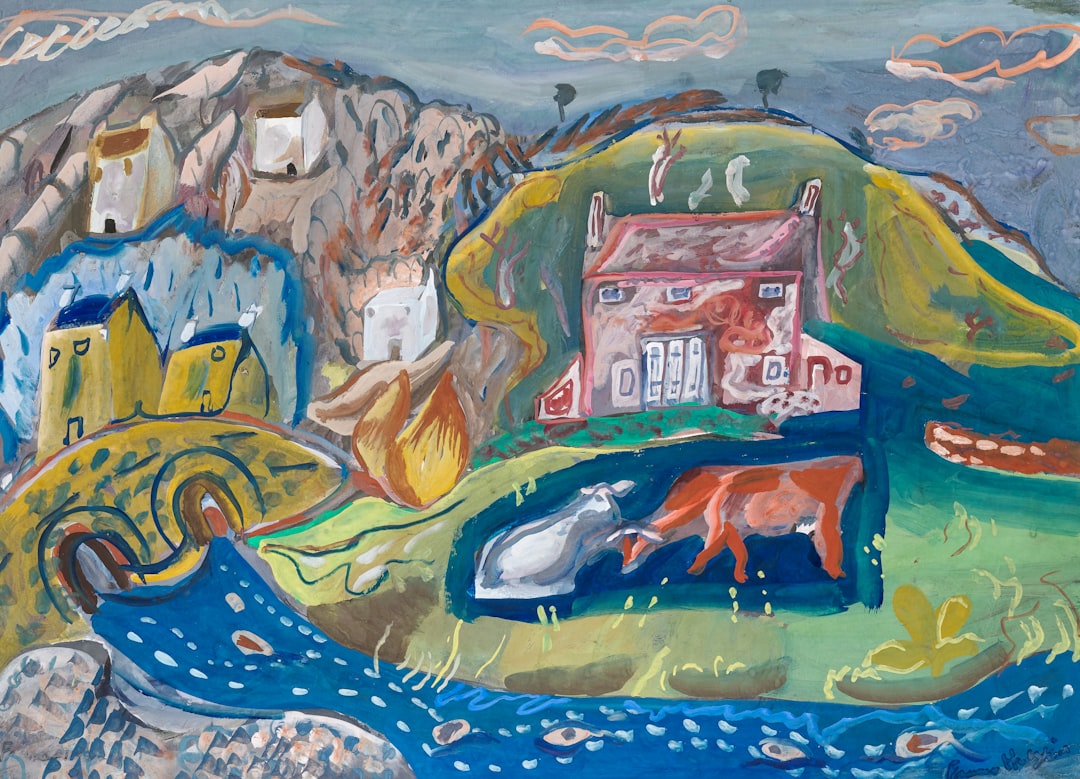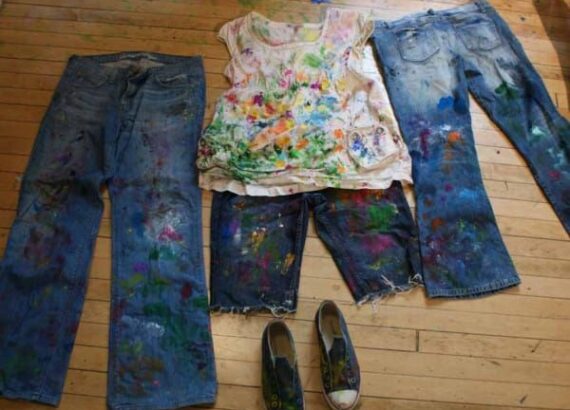Native American Acrylic Paintings

Native American art is a beautiful and integral part of the culture of Indigenous peoples in North America. For centuries, Native American artists have used various mediums to express their culture, traditions, and beliefs. One of the most popular mediums used is acrylic paint. In this article, we’ll explore the history and significance of Native American acrylic paintings, and highlight some of the most famous native artwork created with this medium.
I. The History and Significance of Native American Acrylic Paintings

Acrylic paint was first introduced in the 1950s, and it quickly gained popularity among artists for its versatility and vibrant colors. Native American artists also began to embrace this medium as a way to express their culture and traditions in a modern and innovative way.
Acrylic paintings are often characterized by bold colors and intricate designs. These paintings usually depict scenes from Native American life, such as hunting, ceremonies, and spiritual beliefs. They also incorporate traditional symbols and patterns that hold deep cultural significance.
1. Preserving and Revitalizing Native Art
Native American acrylic paintings play a crucial role in preserving and revitalizing Indigenous art. Through this medium, artists are able to blend traditional techniques with contemporary styles, creating unique and powerful pieces that keep their culture alive.
In the past, traditional Native American art forms were often discouraged or even banned by colonial powers. Acrylic paintings provide a way for artists to reclaim their culture and share it with the world. By using a modern medium, they are able to reach a wider audience and showcase the beauty and richness of their traditions.
2. The Impact of Native American Acrylic Paintings
Native American acrylic paintings have had a significant impact on the art world. They have introduced a new and innovative style that is deeply rooted in Indigenous culture. These paintings have also brought attention to the struggles and triumphs of Native American communities, shedding light on important issues and inspiring change.
Moreover, native artwork has also been a source of economic empowerment for Indigenous peoples. By selling their paintings, artists are able to support themselves and their families, while also preserving their heritage and traditions.
3. Expanding Narratives in Art
The expansion of narratives through Native American acrylic paintings has allowed for a wider representation of Indigenous stories and perspectives. As artists create pieces that reflect their personal experiences and community histories, they add depth to the understanding of Native American life.
These paintings often act as a visual narrative, telling stories that may not be well-documented in written history. Through vibrant imagery and symbolism, artists communicate tales of creation, migration, conflict, and resilience.
4. Incorporating Modern Themes
As Native American artists navigate the contemporary world, they often incorporate modern themes and issues into their acrylic paintings. This fusion of traditional and modern subjects reflects the living and evolving nature of Indigenous cultures.
By addressing topics such as environmentalism, political activism, and cultural assimilation, these artworks serve as a contemporary chronicle of Native American life. They challenge viewers to consider the ongoing impact of historical events and present-day policies on Indigenous communities.
4. Techniques and Innovations
The use of acrylic paint has allowed Native American artists to experiment with new techniques and innovations. Acrylics dry quickly, which enables artists to layer colors and create textures that are difficult to achieve with other mediums.
Artists have innovated by combining acrylics with other materials, such as beads, fabric, and found objects, to create mixed-media works that push the boundaries of traditional Native American art. These innovations demonstrate the adaptability and creativity of Indigenous artists.
II. Famous Native American Acrylic Paintings

Native American acrylic paintings have gained recognition and admiration from art enthusiasts all over the world. Here are some of the most famous native artwork created with this medium.
1. “The Sacred Hoop” by Kevin Red Star
“The Sacred Hoop” is a powerful acrylic painting by renowned Native American artist Kevin Red Star. The painting depicts a group of Native Americans gathered around a sacred hoop, representing the circle of life and the interconnectedness of all living things. Red Star’s use of bold colors and intricate patterns makes this painting a striking representation of Native American culture.
2. “The Offering” by T.C. Cannon
T.C. Cannon was a prominent Native American artist known for his bold and expressive paintings. “The Offering” is an acrylic painting that depicts a Native American woman offering a bowl of corn to the spirits. The vibrant colors and strong brushstrokes in this painting capture the spiritual and cultural significance of this ritual.
3. “The Dream of the New Dawn” by Fritz Scholder
Fritz Scholder was a renowned Native American artist who used his paintings to challenge stereotypes and bring attention to social issues. “The Dream of the New Dawn” is a powerful acrylic painting that portrays a Native American woman holding a baby, symbolizing the hope and future of Indigenous communities. Scholder’s use of bright colors and bold brushstrokes makes this painting stand out and draws attention to the struggles and resilience of Native American women.
4. “The People of the Plains” by Jaune Quick-to-See Smith
Jaune Quick-to-See Smith is a Native American artist whose work often addresses issues of identity, culture, and politics. “The People of the Plains” is an acrylic painting that depicts a group of Native Americans on horseback, representing the strength and resilience of Indigenous communities. The use of bold colors and intricate patterns in this painting adds depth and symbolism to the piece.
5. “Dance of the Spirit People” by Norval Morrisseau
Norval Morrisseau, also known as Copper Thunderbird, was a groundbreaking Anishinaabe artist whose distinct style has influenced many. “Dance of the Spirit People” is a mesmerizing acrylic painting that showcases his signature use of bright, bold colors and outlines to depict figures and animals from Anishinaabe mythology.
6. “Two Worlds” by Jeffrey Gibson
Jeffrey Gibson is a contemporary Native American artist who blends elements of traditional Native American art with modern influences. In “Two Worlds,” Gibson creates a dynamic interplay between geometric patterns and contemporary imagery, reflecting the duality of Indigenous identity in the modern world.
7. “Mother Earth” by Bunky Echo-Hawk
Bunky Echo-Hawk’s “Mother Earth” is a vivid acrylic painting that captures the importance of nature and sustainability in Native American culture. Echo-Hawk’s piece is both a celebration of the natural world and a call to action to protect it for future generations.
III. The Future of Native American Acrylic Paintings
Native American acrylic paintings continue to evolve and impact the art world. As more Indigenous artists embrace this medium, we can expect to see new and innovative styles emerge, while still staying true to traditional techniques and cultural significance.
1. Preserving and Passing on Traditions
Acrylic paintings have become a way for Native American artists to not only preserve their traditions but also to pass them on to the younger generations. By using this modern medium, artists are able to engage and inspire younger audiences, keeping their culture alive and thriving.
2. Inspiring Social Change
Native American acrylic paintings have the power to inspire change and bring attention to important social issues. Through their art, Indigenous artists can raise awareness about the struggles and triumphs of their communities, creating a platform for discussion and action.
3. Pioneering New Artistic Frontiers
As the art form evolves, Native American artists are pioneering new artistic frontiers. They are experimenting with digital mediums, incorporating acrylic painting techniques into digital art, and reaching a global audience through online platforms.
4. Collaborative Efforts and Cross-Cultural Exchange
Collaborations between Native American artists and artists from other cultural backgrounds are leading to a rich cross-cultural exchange. These partnerships result in unique artworks that blend diverse artistic traditions and perspectives.
5. The Role of Art in Education
Native American acrylic paintings are increasingly used as educational tools. They provide a visual representation of history, culture, and contemporary issues that can be more impactful than text alone. Educators are incorporating these paintings into curricula to provide a more nuanced understanding of Native American experiences.
Conclusion
Native American acrylic paintings are a unique and powerful expression of Indigenous culture and traditions. They have had a significant impact on the art world and continue to inspire and engage audiences. By embracing this modern medium, Native American artists are able to preserve and share their heritage, while also creating new and innovative styles. Through native artwork, we can gain a deeper understanding and appreciation for the beauty and richness of Native American culture.








